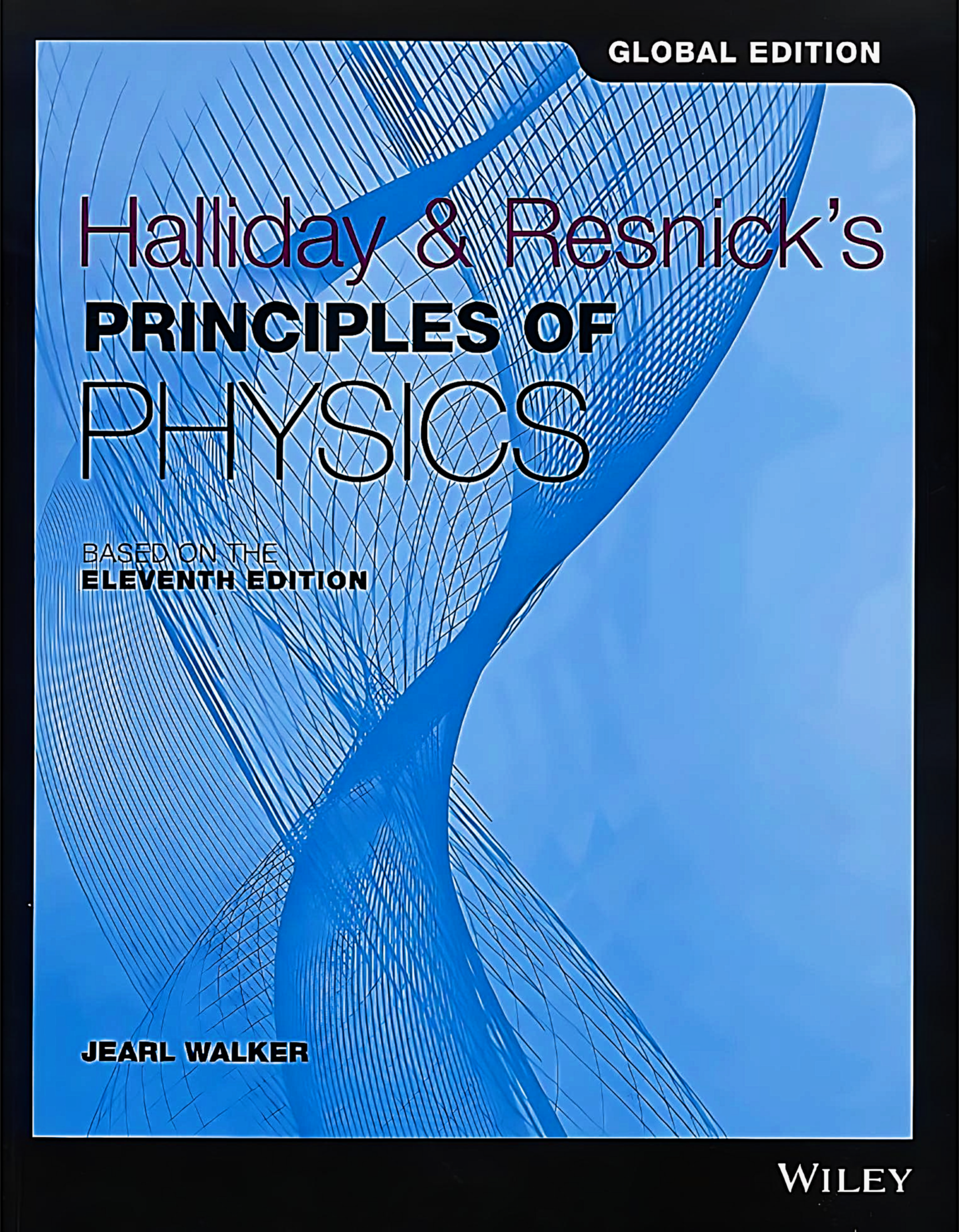Physical Quantity
- Classical Mechanics 1.1

from 「Principle of Physics」: Halliday & Rensick
Physical property
A physical property is any property that is measurable, whose value describes a state of a physical system. The changes in the physical properties of a system can be used to describe its changes between momentary states. A quantifiable physical property is called physical quantity.
Physical quantity
A physical quantity is a physical property of a material or system that can be quantified by measurement. A physical quantity can be expressed as a value, which is the algebraic multiplication of a Numerical value and a Unit.
A physical quantity possesses at least two characteristics in common.
- Numerical magnitude
- Scalars
- Vectors
- Tensors
- Units
Let’s continue talking about units.
Unit
A unit of measurement is a definite magnitude of a quantity, defined and adopted by convention or by law, that is used as a standard for measurement of the same kind of quantity. Any other quantity of that kind can be expressed as a multiple of the unit of measurement.
Base unit
A base unit is a unit adopted for measurement of a base quantity. A base quantity is one of a conventionally chosen subset of physical quantities, where no quantity in the subset can be expressed in terms of the others. Any physical unit can be expressed by the product of base units, and we define the dimension of a physical quantity by its exponents of base units.
SI unit
| Symbol | Defining constant | Exact Value |
|---|---|---|
| $ \Delta\nu_\ce{Cs} $ | hyperfine transition frequency of Cs-133 | $ 9\,192\,631\,770\,\mathrm{Hz}$ |
| $ c $ | speed of light | $ 299\,792\,458\,\mathrm{m/s} $ |
| $ h $ | Planck constant | $ 6.626\,070\,15\times10^{34}\,\mathrm{J\cdot s} $ |
| $ e $ | elementary charge | $ 1.602\,176\,634\times10^{−19}\,\mathrm{C} $ |
| $ k $ | Boltzmann constant | $ 1.380\,649\times10^{−23}\,\mathrm{J/K} $ |
| $ N_\text{A} $ | Avogadro constant | $ 6.022\,140\,76\times10^{23}\,\mathrm{mol^{−1}} $ |
| $ K_\text{cd} $ | luminous efficacy of 540 THz radiation | $ 683\,\mathrm{lm/W} $ |
| Quantity | SI unit | Dimension symbol | ||
|---|---|---|---|---|
| Name | Symbol | Definition | ||
| Length | meter | $ \mathrm{m} $ | The duration of $\Delta\nu_{\text{Cs}}$ periods of the radiation corresponding to the transition between the two hyperfine levels of the ground state of the caesium-133 atom. | $ \mathsf{L} $ |
| Time | second | $ \mathrm{s} $ | The distance travelled by light in vacuum in $\dfrac{1}{c}$ seconds. | $ \mathsf{T} $ |
| Mass | kilogram | $ \mathrm{kg} $ | The kilogram is defined by setting the Planck constant $h$, given the definitions of the meter and the second. | $ \mathsf{M} $ |
| Electric current | ampere | $ \mathrm{A} $ | The flow of exactly $\dfrac{1}{e}$ times the elementary charge e per second. | $ \mathsf{I} $ |
| Thermodynamic temperature | kelvin | $ \mathrm{K} $ | The kelvin is defined by setting the Boltzmann constant $k$, given the definition of the kilogram, the meter, and the second. | $ \mathsf{\Theta} $ |
| Amount of substance | mole | $ \mathrm{mol} $ | The amount of substance of exactly $N_{\text{A}}$ elementary entities. | $ \mathsf{N} $ |
| Luminous intensity | candela | $ \mathrm{cd} $ | The luminous intensity, in a given direction, of a source that emits monochromatic radiation of frequency $5.4\times10^{14} \mathrm{Hz} $ and that has a radiant intensity in that direction of $\dfrac{1}{K_{\text{cd}}} \mathrm{W/sr}$. | $ \mathsf{K} $ |
A diagram showing the relationship between SI units
| Prefix | Base 10 | |
|---|---|---|
| Name | Symbol | |
| quetta | $ \mathrm{Q} $ | $ 10^{30} $ |
| ronna | $ \mathrm{R} $ | $ 10^{27} $ |
| yotta | $ \mathrm{Y} $ | $ 10^{24} $ |
| zetta | $ \mathrm{Z} $ | $ 10^{21} $ |
| exa | $ \mathrm{E} $ | $ 10^{18} $ |
| peta | $ \mathrm{P} $ | $ 10^{15} $ |
| tera | $ \mathrm{T} $ | $ 10^{12} $ |
| giga | $ \mathrm{G} $ | $ 10^{9} $ |
| mega | $ \mathrm{M} $ | $ 10^{6} $ |
| kilo | $ \mathrm{k} $ | $ 10^{3} $ |
| hecto | $ \mathrm{h} $ | $ 10^{2} $ |
| deca | $ \mathrm{da} $ | $ 10^{1} $ |
| $ 10^{0} $ | ||
| deci | $ \mathrm{d} $ | $ 10^{-1} $ |
| centi | $ \mathrm{c} $ | $ 10^{-2} $ |
| milli | $ \mathrm{m} $ | $ 10^{-3} $ |
| micro | $ \mathrm{\mu} $ | $ 10^{-6} $ |
| nano | $ \mathrm{n} $ | $ 10^{-9} $ |
| pico | $ \mathrm{p} $ | $ 10^{-12} $ |
| femto | $ \mathrm{f} $ | $ 10^{-15} $ |
| atto | $ \mathrm{a} $ | $ 10^{-18} $ |
| zepto | $ \mathrm{z} $ | $ 10^{-21} $ |
| yocto | $ \mathrm{y} $ | $ 10^{-24} $ |
| ronto | $ \mathrm{r} $ | $ 10^{-27} $ |
| quecto | $ \mathrm{q} $ | $ 10^{-30} $ |
